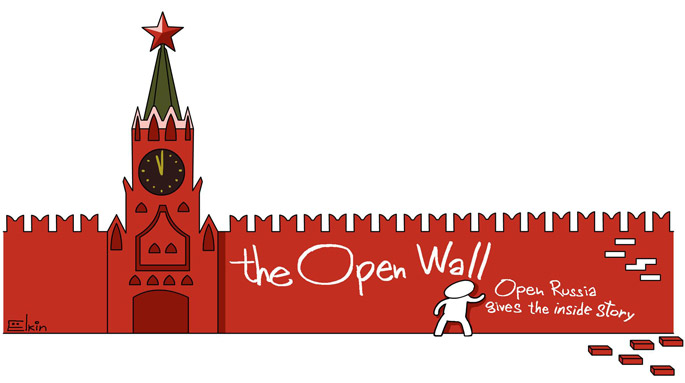Steampunk Putinism

The Russian government has received an entirely straight-faced proposal about a new transport network, costing a mere $240 billion. And it’s not just the price that’s inflated …

Ilya Klishin
In the SF sub-genre known as steampunk, the future is oddly reminiscent of Victorian England, both in fashion and technology. In steampunk environments, top-hatted, monocled gents ride around in mechanical carriages and high-speed steam trains (the steam engine, unsurprisingly, plays a key role in the genre). In Putinist Russia, steampunk seems quite at home.
The Kommersant newspaper recently published the text of a letter to Deputy Prime Minister Arkady Dvorkovich. The letter featured an entirely straight-faced proposal regarding the creation of an extensive network of dirigible routes in Siberia and the Far East; the network would be established by 2035 at a cost of a mere $240 billion.
Yes, dear reader, you read correctly: dirigibles. As in zeppelins, which ceased to be used in civil aviation as early as the 1930s. As envisaged by the project’s creators, dirigibles would connect two of southern Siberia’s major railway arteries – the Baikal-Amur Mainline and the Trans-Siberian Railway – to the Northern Sea Route. And the regular back-and-forth of these silvery “cigars” through the skies over Siberia would somehow – apparently – generate seven million jobs and breathe new life into Asian Russia.
Contrary to what you might think, the ranks of the project’s advocates aren’t full of urban crazies. Quite the opposite, in fact: among their number are respected academicians from the Russian Academy of Sciences. Furthermore, the idea has received the support of the expert council of the Skolkovo Foundation, the government-inspired answer to Silicon Valley.
But, once your giggles have subsided and your astonishment slowly dissipates, the fundamental question still remains – what is all this, and why is it necessary?
In the 1970s and 80s, another large-scale Siberian project was being planned in the Soviet Union: experts were actively mulling the possibility of diverting north-flowing rivers to the south, so that, instead of conveying their precious fresh water to the Arctic, they’d irrigate the dry steppes of Kazakhstan and the deserts of Central Asia. Ultimately, however, the idea never got off the ground – as subsequent computer modelling would later demonstrate, such a thing could never be done without unleashing a massive ecological catastrophe in the process.
Nonetheless, that project was at least typified by the romanticism (rather gung-ho romanticism, yes, but still romanticism) of Soviet engineers who, clad in baggy jumpers and sporting horn-rimmed glasses, ambled down smoky research institute corridors by day and, come nightfall, sang and played guitar around the kitchen table and fantasised about a better future – not only for themselves but (don’t laugh, now) for all mankind. These fantasies were, if nothing else, sincerely entertained.
One is pretty hard-pressed, conversely, to believe in the sincerity of the people behind the current Siberian project – people who declare that one day, dirigibles will criss-cross Siberia’s skies like commuter buses. Indeed, one would be hard-pressed, in the Putinist Russia of 2016, to trust anyone seeking funding to the tune of $240 billion, irrespective of what sort of project happens to be on the table. Whoever these people might be, whatever they might be proposing, the default suspicion is that that they’re waist-deep in corruption. And nor, of course, is the suspicion unjustified: Russia’s entire politico-economic system has been constructed in such a way as to facilitate this sort of corruption, and to mitigate the adverse effects on itself of annoying little irritants like fair elections, a just judiciary and a free press.
The Siberian dirigibles story may sound like a joke, but, if you think about it, it’s really no laughing matter.



